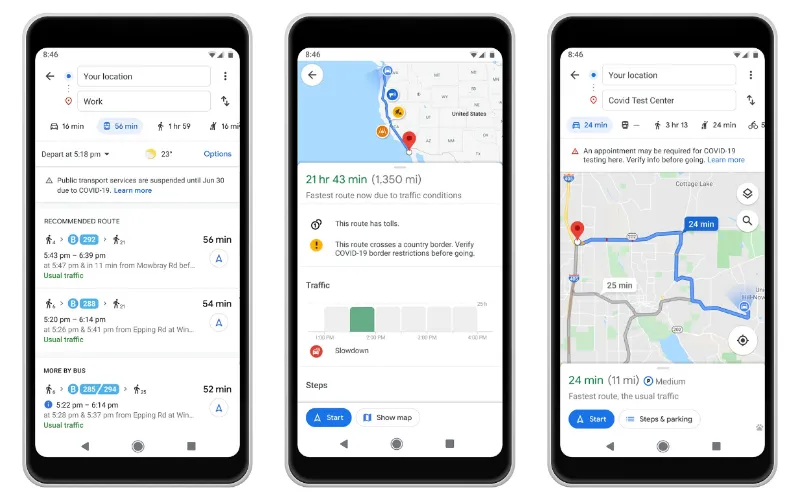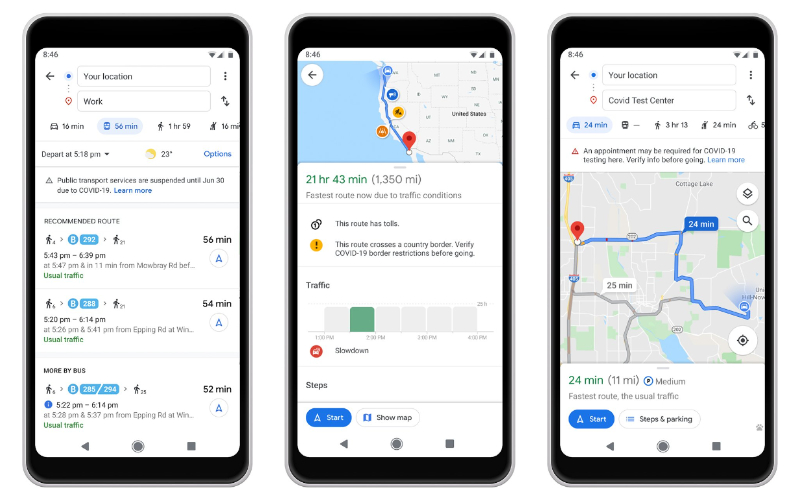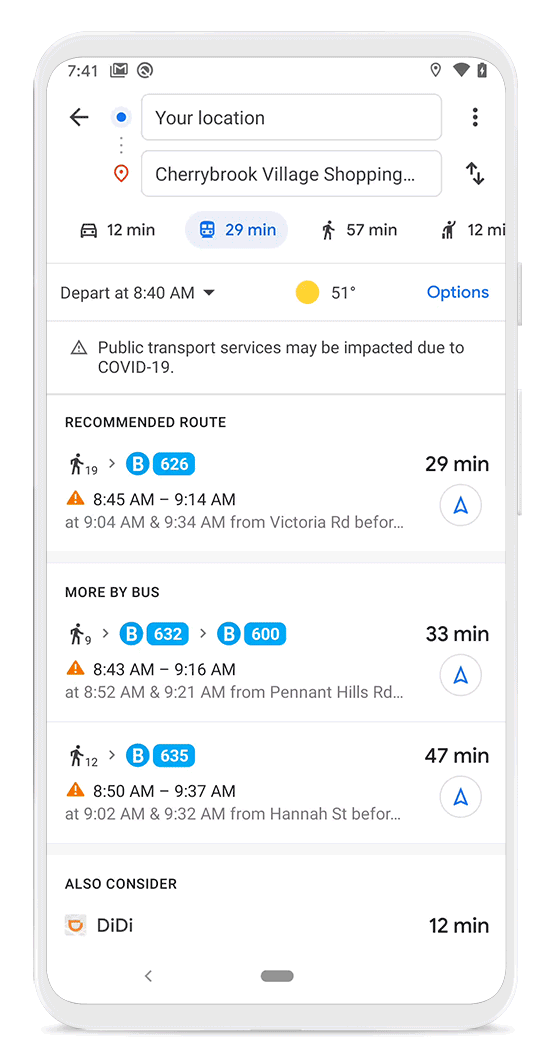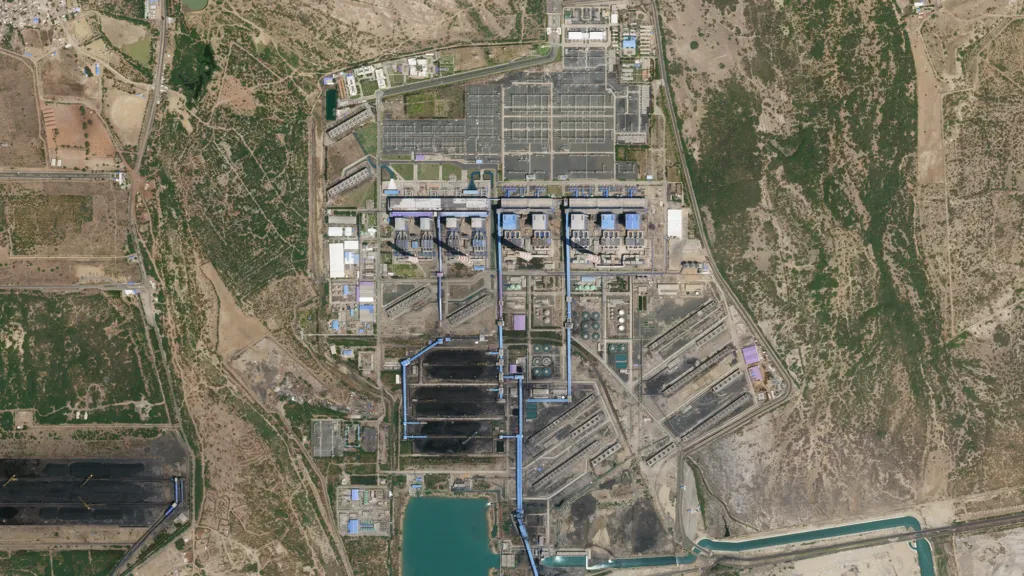
Google Maps adds new COVID-19 travel alerts as cities reopen
To stay safe in the COVID-19 era, it’s more important than ever to know how crowded public transport might be or if a trip could be impacted by checkpoints or ever-changing travel restrictions. This is why Google Maps is launching a string of helpful new features that could assist people when they feel the need to venture out.

In Argentina, Australia, Belgium, Brazil, Colombia, France, India, Mexico, Netherlands, Spain, Thailand, UK, and the US, Google has tied up with local transit agencies to tell commuters if their trip is likely to be affected by COVID-19 restrictions. The tech giant expects to add more countries to this list soon.
In Canada, Mexico, and the US, Google will also notify drivers about COVID-19 checkpoints and restrictions along their routes, especially at the national borders.
For those navigating to medical facilities or COVID-19 testing centers in Indonesia, Israel, the Philippines, South Korea, and the US, Google will display an alert reminding users to verify eligibility and facility guidelines to avoid being turned away.
Avoiding crowds on public transport with Google Maps
 Did you know there is a feature available right inside Google Maps that you can use to ensure proper social distancing while commuting? It’s called crowdedness predictions for public transit.
Did you know there is a feature available right inside Google Maps that you can use to ensure proper social distancing while commuting? It’s called crowdedness predictions for public transit.
Google Maps has been providing transit crowdedness predictions since last year. But now, you will also be able to contribute crowdedness information based on your own experiences. And if you want to see the times when a transit station is historically more or less busy, all you have to do is search for a station in Google Maps or tap on the station on the map to see the departure board and busyness data.
Additionally, you can also check for insights like temperature, accessibility, and security onboard, as well as designated women’s sections in regions where transit systems have them. Detailed accessibility information is also available for wheelchair users, including the locations of the doors, seating, stop buttons, etc.
With more and more cities around the world striving to get back to ‘normalcy’, it sure is good to see Google Maps doing its bit to help travelers and commuters make better navigation decisions.









